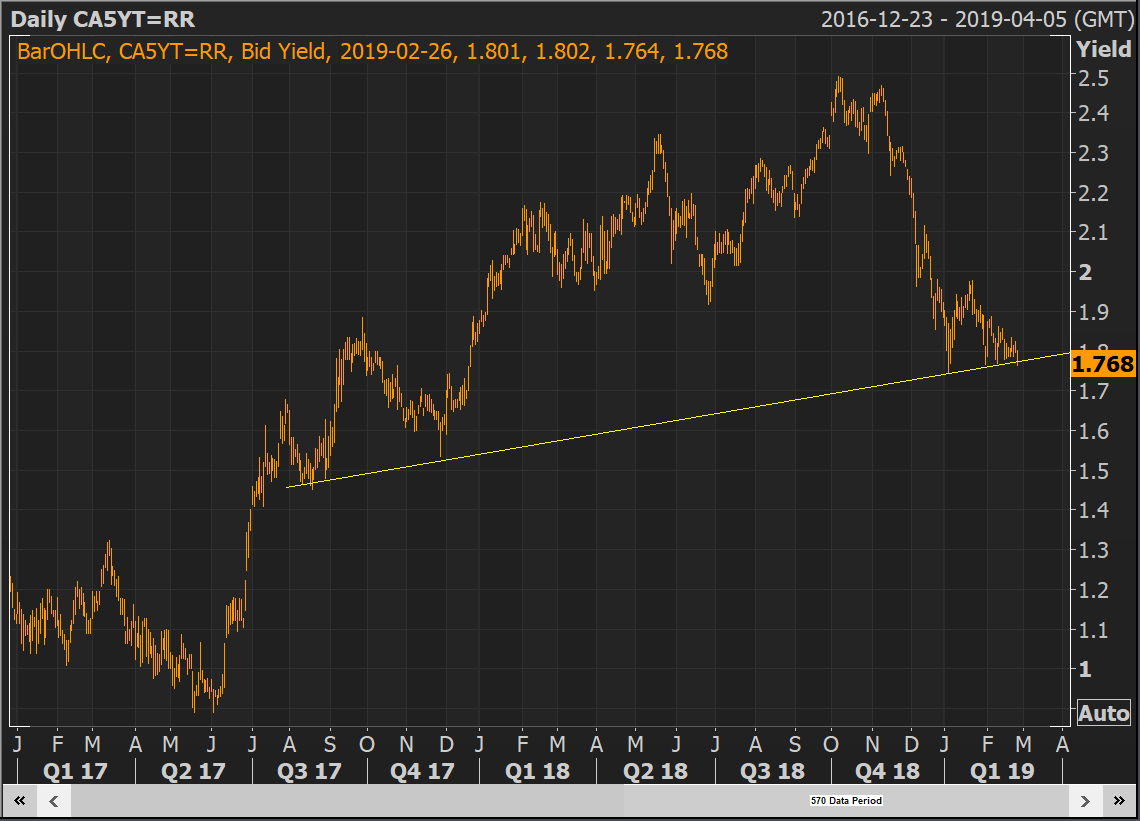Have you ever walked on a frozen lake and worried you’re going to fall through?
That’s the feeling of many traders right now — the ones shorting Canada’s 5-year government bond.
The yield on that 5-year bond is what guides fixed mortgage rates (among other things), and it’s seemingly on the verge of making a new 14-month low.

5-year Canada Bond Yield – Chart Source: Reuters
The magic number to watch is 1.74%. If the 5-year yield breaks below that level it would violate technical support and go where it hasn’t gone since 2017.
Any significant follow-through would then pull fixed mortgage rates along for (at least some of) the ride. The biggest question is not whether it breaks this level, but what the 5-year yield will do if/when it does.
Why it Matters
A forceful break below 1.74% portends:
- Cheaper fixed rates
- Meaningful if:
- you’re looking to lock in at the lowest possible fixed rate for a mortgage closing in the next four months
- you have an existing rate hold and want to request a rate drop
- The best 5-year fixed rates still haven’t fallen in line with December’s plunge in bond yields. Another high-profile dip in yields would pressure banks to lower rates further, particularly as we approach the critical spring mortgage market.
- Meaningful if:
- A potentially lower mortgage qualifying rate (MQR)
- A 10-basis-point drop in the MQR means an average family would be able to qualify for a roughly 0.9% bigger mortgage.
- The MQR has been stuck at 5.34% since last May (2018). It hasn’t seen a cut since September 2016.
- Prior to January’s low, the last time bond yields were at 1.74% was December 2017. At that time, the MQR was a significant 35 bps lower.
- Big banks are clearly hesitant to drop 5-year posted rates (which determine the MQR) despite the massive plunge in yields since November. Lowering 5-year posted rates requires banks to cut rates on countless applications waiting to close (i.e., deals in their “pipelines”), reduces future penalty revenue for new fixed-rate borrowers and has regulatory implications (policymakers prefer not to see it get easier for borrowers to add to their debt loads).
In sum, 1.74% is one of the most important thresholds we’ve seen in months in the 5-year bond market. It’s possible that yields merely pierce this level and bounce back. But if they don’t bounce back, it’ll signal darkening clouds over the economy and likely more rate discounting to come.
Either way, stay tuned.
Did you know?
The Spy lets you set automated rate alerts so you can be notified when rates reach/break a important level.
Here’s more info on Rate Alerts. You can set them up in your RateSpy.com profile.

 log in
log in
 A forceful break below 1.74% portends:
A forceful break below 1.74% portends: